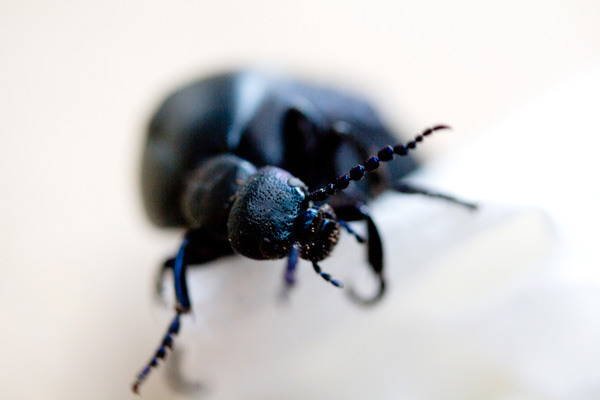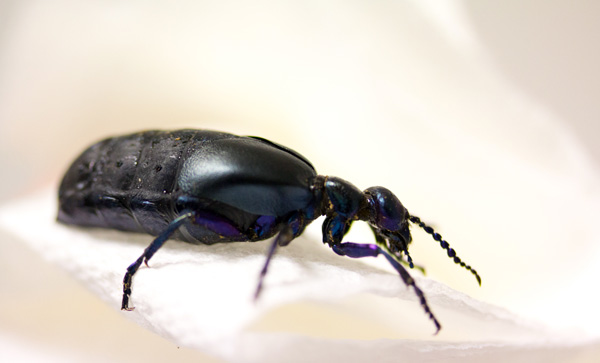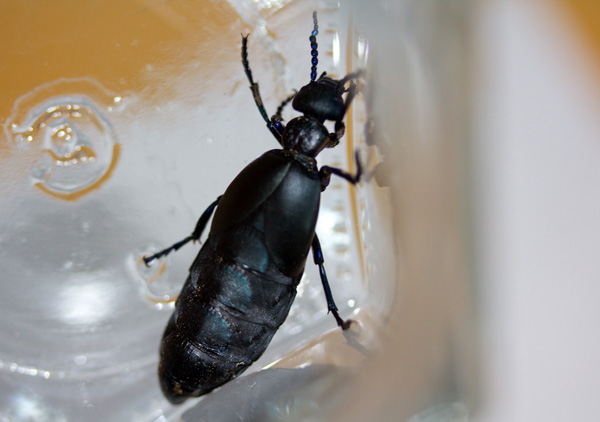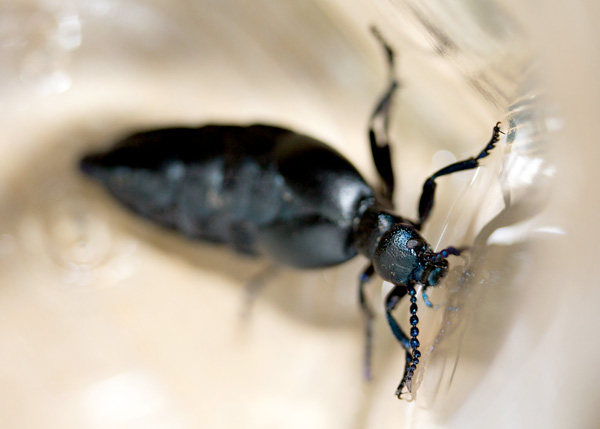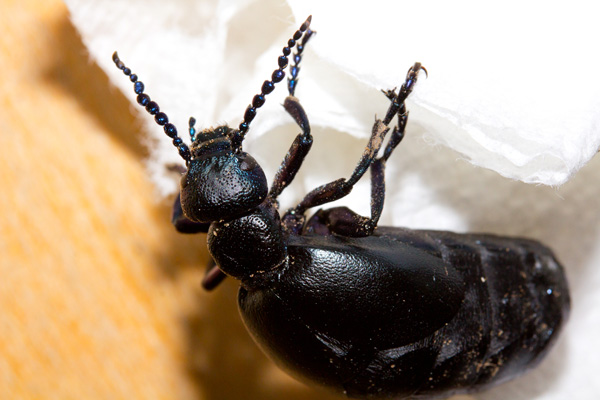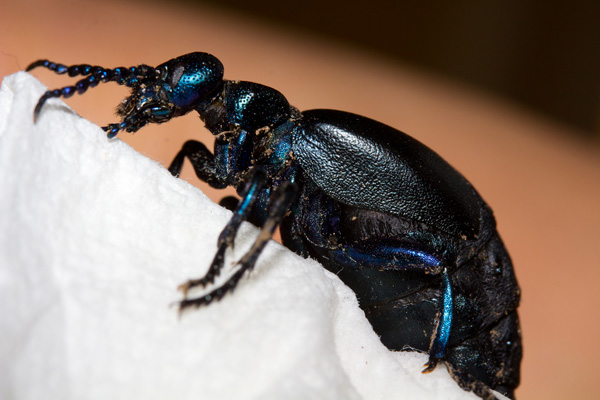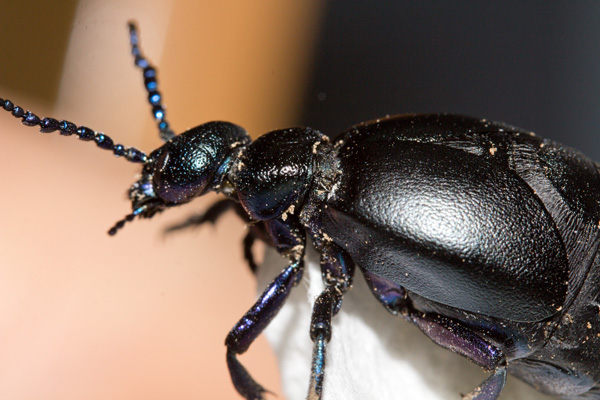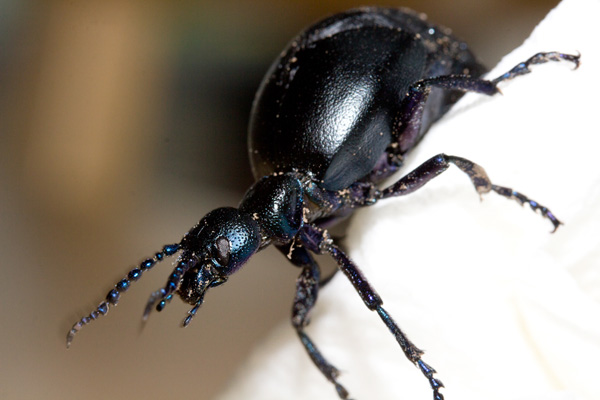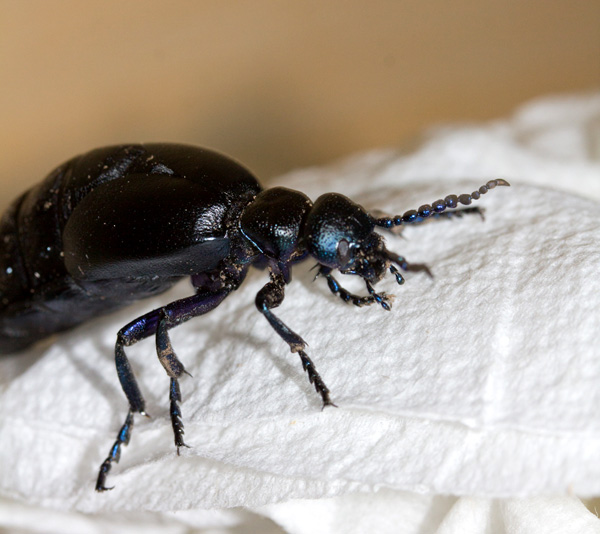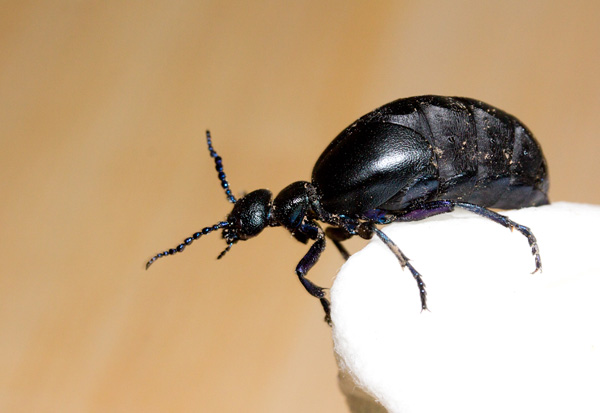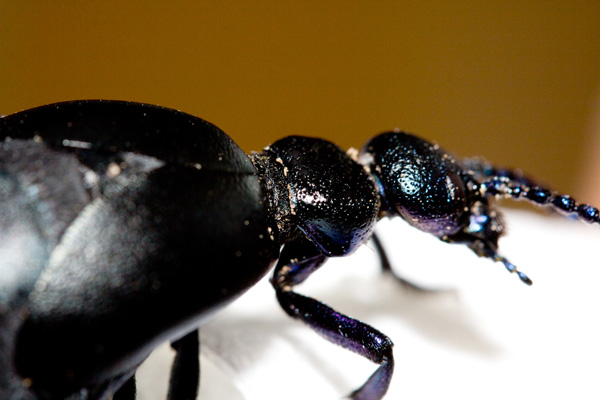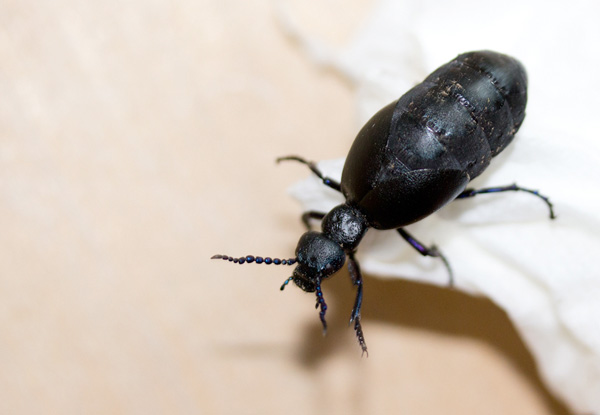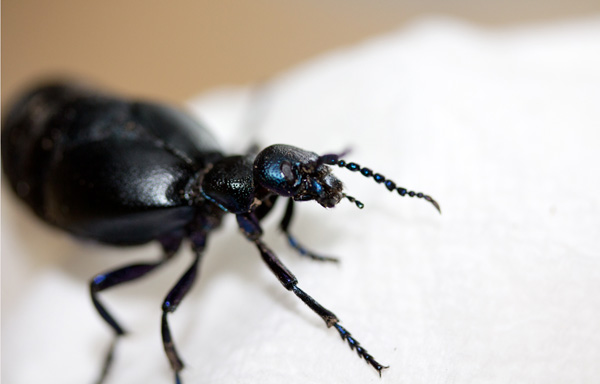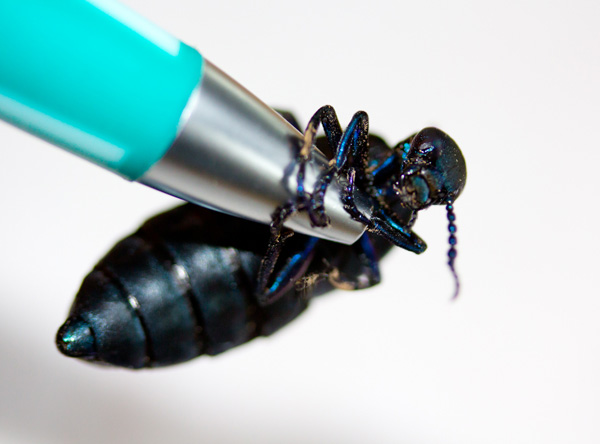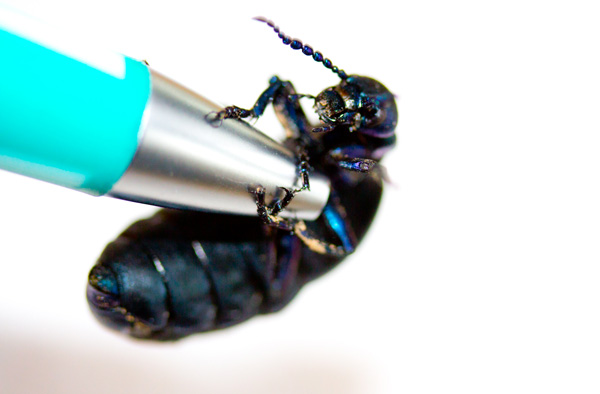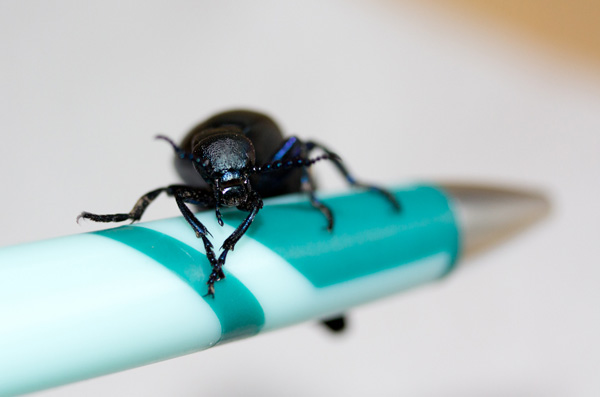Violet Oil Beetle and the Oil Beetle Hunt!- 04.24.12
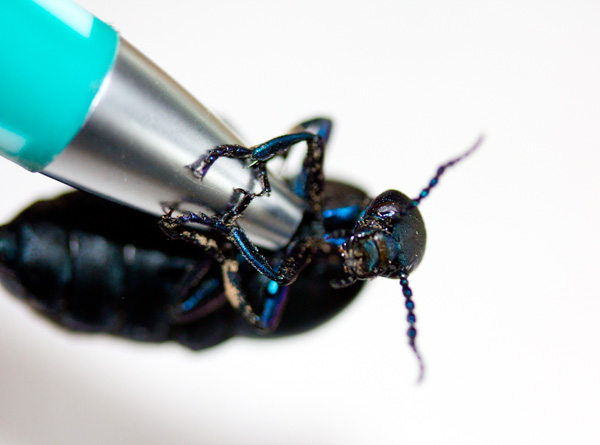
The latest dose of natural inspiration from our resident zoologist and London-based editor, Justine Aw.
Despite being a zoologist, I confess, I wasn’t 100% sure what this amazing creature was when I first caught sight of it. A bright glint of blue and purple in the sunshine, it didn’t fit with its surroundings and the Londoner in me immediately dismissed it as a stray bit of foil or plastic. But then we noticed it was moving on its own, waddling along in a very exposed position at the edge of a Dorset field.
On closer inspection, it looked a bit like a rove beetle with its half-sized elytra (those hard outer wings), but it far larger and more iridescent than any rove beetle I’d ever seen (some 30mm long)! So we snapped a few photos of the beautiful beetle for ID, then popped it back on the soil, where it started to dig. Check out our photos and find out more about these beautiful and fascinating insects on the next page!
Our beautiful mystery beetle was an oil beetle (more specifically we suspect the violet oil beetle, Meloe violaceus, though it’s pretty tricky to distinguish between them and the black oil beetle Meloe proscarabaeus) and she’s a girl. Turns out she was in the early stages of digging herself a nest burrow to lay hundreds of eggs…and here’s where it gets really interesting. The oil beetles rely on bees to complete their life cycle! The beetles’ eggs hatch into tiny larvae with hooklike feet called tringulins that climb up onto flowers where they wait to hitch a ride on a passing bee. The tringulins hop onto the bees to catch a ride back to the bee’s burrow, where they move in and proceed to grow by eating the bees’ eggs, pollen and nectar until they ultimately emerge as adults.
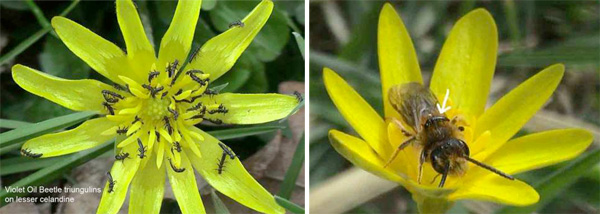
These photos of the tringulin larvae were taken by John Walters who not only conducts excellent research on beetles, but also captures wildlife through his beautiful artwork, including these lovely studies of M. violaceus!
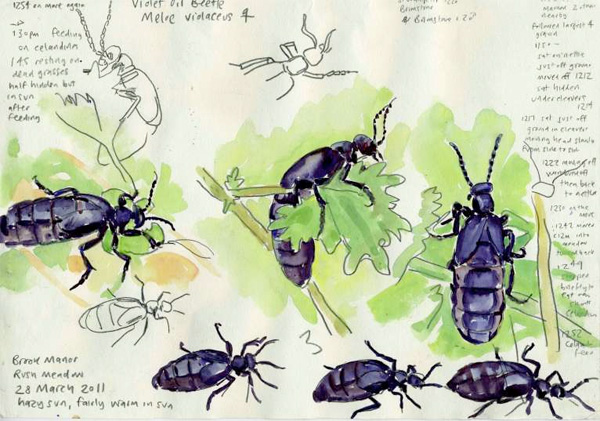
The violet oil beetle is just one of four oil beetle species currently found in the UK, and all four species are under threat (a further four have already gone extinct). To better understand where they are and how they are faring, they are also the focus of a UK-wide survey run by Buglife in partnership with the National Trust, Oxford University Museum of Natural History and Natural England. Bug Life’s oil beetle pages have more info on how to distinguish between the species, a system to report your finds as well as a flickr pool of photos of these gorgeous beetles!
And without further ado, here are our pictures of this iridescent beauty!
